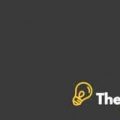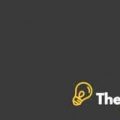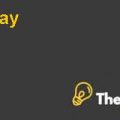
PART 1: CURRENT EXAMPLES OF INTERNATIONAL MARKETING
1. EXAMPLE 1: McDonalds (Product Development)
McDonalds is owned by McDonald brothers and Businessman Ray Kroc is the company’s franchise agent that helps it to grow worldwide. It is the world’s largest chain of hamburger fast food restaurants that primarily sells hamburgers, beef cheese burgers, chicken burgers, French fries, breakfast items, soft drinks, milkshakes, soft drinks and desserts. The company has expanded its menu to include salads, fish burgers, wraps, smoothies, fruit and seasoned fries.
The product features include product variety, freshness, alignment with the current consumer demand, and it doesn’t carry products for long. The benefits that customers receive include product variety that ranges from fish to beef to ham to chicken to pork to veggie. In addition, other benefits customers can enjoy fresh, delicious burgers at its outlets that are available at all time. The target market of McDonalds that buy its products ranges from parents with children, children, business customers or teenagers. However, for its target market of children, McDonalds has Happy Meals that is a short course, enough for them to satisfy their hunger and along with that McDonalds offer a toy with every Happy Meal. The toy is customized every month according to the latest animations in town (Thomas, 2004).
It is a good example to use in the analysis because McDonalds is a multinational brand that defines its relevance in the international marketing example and McDonalds sets its menu while keeping in mind what its customers want. For example, as a fast food restaurant it is expected to have beef, meat pork, chicken etc., but when McDonalds was launched in India, it catered its audiences through veggie patties in the burger. In addition to this, McDonalds doesn’t cannibalize (trade-off) its existing product range at the expense of a new product; rather the product is discarded on the basis of its maturity in the market. Adding up to this, McDonalds offer Branded Core Value (BCV) products depending on the region that is being served. The BCV products mainly include the MCVEGGIE and MCCHICKEN burgers and there is no pork or ham in Pakistan (Thomas, 2004).
2. EXAMPLE 2: Starbucks (Price Strategy)
Starbucks Corporation does business in Starbucks Coffee which is an American, multinational brand, owned by Jerry Baldwin, Gordon Bowker and Zev Siegl. It primarily sells beverages both hot and cold, grounded instant coffee, whole-bean coffee, tea, pastries, Frappuccino beverages and smoothies. However, it also sells pre-packed products such as sandwiches, mugs and tumblers. Its evening location also offers range of beer, wines and appetizers. Through its entertainment sector it also markets books, music, and film and Starbucks ice cream is also available at grocery stores (Michelli, 2006).
The best feature of its coffee is that they have many specialty coffee selections and flavors all of which are hand grounded. Moreover, benefits that customers reap include the ambience at its franchises. Customers mostly go there for hangouts, to enjoy free Wi-Fi services, and the Starbucks card that helps customers not to carry cash and with each swap they earn points that can be redeemed later. They give its customers the best quality coffee and charge a premium price for it. Customers that are most likely to buy Starbucks coffee are 25- 35 year old business graduates who are single and career-oriented.
The targeted consumer is one who seeks quality and is not price sensitive; such consumers fall in middle-class category. The relevance of this example in the international marketing is its multinational operations. Moreover, Starbucks charges high prices throughout the world due to its superior quality beverage. It uses a value based pricing approach to prevent competition from local chains; therefore, it maintains its positions as a premium brand in the market. It carves out the insensitive customer to reap profits through its strong gourmet coffee. It allows its customers to have upsized coffees with an extra charge. Starbucks introduces price hikes due to which it stands alone in the market without compromising on customer retention. By versioning its products, Starbucks enjoy higher margins (Michelli, 2006).
3. EXAMPLE 3: Sony (Promotional Activities)
Sony Corporation commonly known as Sony is a conglomerate, multinational company owned by the two founders Masaru Ibuka and Akio Morita. It has a wide range of products that include: televisions, projectors, Home video & Audio, Home theatre system, digital photography, handy cams, computer peripherals, portable audio, in-car entertainment, gaming consoles, mobile phones and Storage & Recording Media. The product features of Sony include: quality, safety, packaging, repairs and support, warranties, accessories and after sales services. These features benefit consumers by helping them to get their hands on the latest technology in the electronics market (Bates, 1996).
Sony Corporation uses several portals to promote its wide range of products. Sony doesn’t have a specific target market; rather it develops market for each of its product categories. Therefore, anybody who has money ..........................
This is just a sample partial case solution. Please place the order on the website to order your own originally done case solution.













